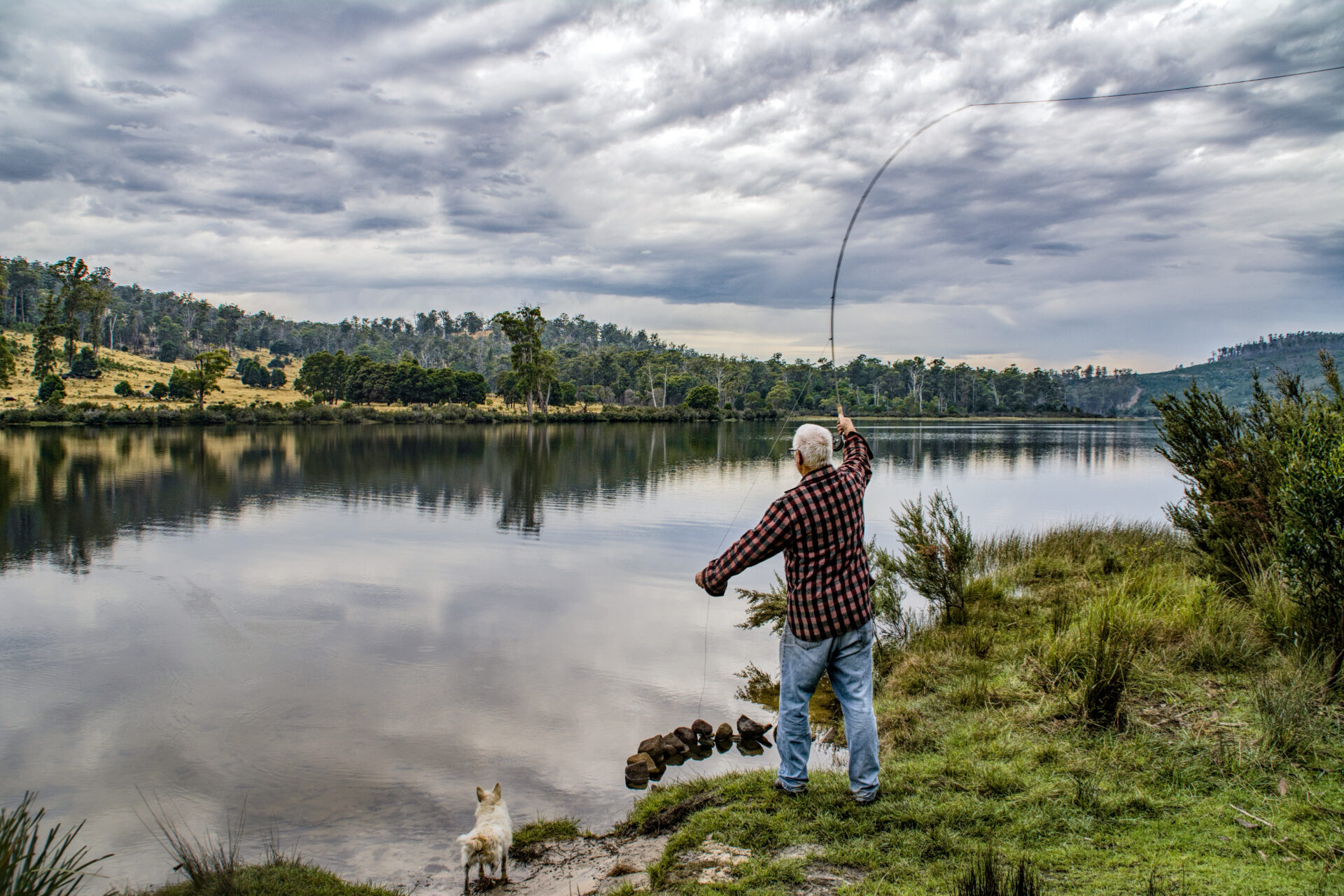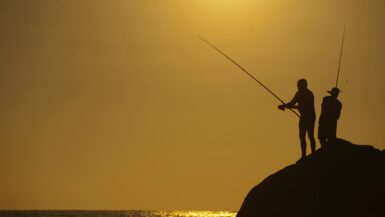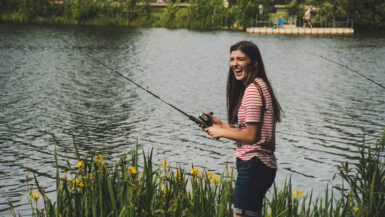Fishing for catfish in freshwater can be an exciting and rewarding experience. The thrill of feeling a bite, the anticipation of what sort of fish is on the other end of the line – it’s hard to beat. With a little bit of knowledge and preparation, you can become an expert catfish angler in no time. In this article, we provide top tips and techniques for successful freshwater catfish fishing.
Identifying Catfish Habitats
Catching catfish in freshwater requires a good knowledge of where to go and what type of environment they prefer. To identify certain catfish habitats, start by learning more about the local waters. Research the type of catfish in the area and what type of habitats they prefer. Map out certain areas that have the right environment for catfish such as slow pools, deep channels, and wide, shallow flats. Look for underwater features such as submerged logs, rocks, and weed beds. Also, pay attention to things such as current, water temperature and clarity.
Location Habits of Catfish
In addition to the environment of the water, paying attention to the location of the catfish is key. To identify the specific behaviors of catfish, try to locate areas where they go to feed or spawn. During the day, catfish like to stay in deep and shady places, such as underwater tree roots, rocks, and undercut banks. As night falls, you can find them in shallower water areas, where they feed. Additionally, spawning season is a good time to find catfish, as they gather in shallow, sandy areas.
Knowing Your Prey
Catfish have unique behaviors that can be difficult to identify. Understanding the habits of your prey is an important skill to have when fishing for catfish. When fishing for catfish, be aware that they tend to travel in schools and feed in the same areas. Additionally, they are most active during periods of low light, such as early morning, late evening, and night time. Knowing more about the type of catfish in the area, such as what they eat and when they feed, will help you identify their habits and find the best spots for catching them.
Tools and Equipment for Fishing Catfish
Once you’ve found a likely spot for catfish, it’s important to have the right tools and equipment for the job. Commonly used tools include rods, reels, and lines. When it comes to bait, try using live bait such as worms, minnows, leeches, or crayfish. Additionally, catfish are attracted to dishes such as chicken livers, shrimp, and hot dogs. Finally, it’s important to understand the local laws and regulations for freshwater fishing, especially if you’re fishing for catfish. This can help ensure a successful and safe day of fishing.
Bait and Tackle
Catching catfish in freshwater requires the right bait and tackle to be successful. Live baits such as worms, crawfish, and minnows are often the most productive when targeting catfish. Prepared baits and scented baits intended specifically for catfish can also be used with great success. Choosing the right bait can be a matter of trial and error, so spend some time experimenting with different types to find the bait your local catfish are most interested in.
When it comes to tackle, catfish require heavy-duty gear. A long and sturdy fishing rod and reliable reel are essential for setting the hook and bringing your fish in. Monofilament or braided line of at least 15 to 20 pound test is recommended for catfish. Heavier lines may be necessary for really big cats. Also, make sure to use hooks sized for the bait of your choice.
Catfish Rigs for Good Results
When setting up your line, it’s important to use a rig designed for catfish fishing. A standard bottom rig is commonly used for targeting catfish. This setup consists of a weight tied to the bottom of the line with a hook tied above it. If you’re fishing in deeper water, consider using a slip bobber rig. This setup allows the weight to sink to the bottom, while the bait and the hook are suspended at the desired depth.
When you’re out catfishing, it’s also important to adjust the size and placement of your bait and weight depending on the type of water and terrain you’re fishing in. In murky or turbulent water, it’s best to keep the bait as close to the bottom as possible, while in calm or clear water, the bait should be placed slightly higher so it remains visible.
Final Tips for Fishing for Catfish
Once you’ve got your gear and gear setup ready, take some time to scout the area and watch for signs of feeding activity before you cast your line. If you see fish or other signs of life, then drop your bait in the same area. Catfish are known to hang around cover such as logs, rocks or vegetation and will usually strike on baits placed near these areas.
Finally, always be patient and wait for the bites. Catfish can be stubborn and will often tease your bait before actually taking it, so don’t be too quick to reel in after you first spot the bite. With a little practice and patience, you’ll be catching catfish in no time. Good luck out there!
Techniques for Catching Catfish
Catfish are found in most freshwater habitats in the United States, meaning that anglers have an abundance of options when it comes to where to fish them. Before setting out to catch catfish, it’s important to understand the species of catfish present in the waters you prefer and the best way to catch them. The most common species of catfish include the channel catfish, flathead catfish, blue catfish, white catfish, and the bullhead catfish. All five of these species can be found in different parts of the U.S., so it’s important to do your research to determine which one is the most likely target for you.
Choosing the Right Bait
A key part of catching catfish is choosing the right bait to use. The most popular types of bait for catfish are live bait such as leeches, crayfish, and minnows, as well as cut bait such as shrimp, homemade doughballs, nightcrawlers, and chicken livers. Live bait is effective because catfish are attracted to the scent of the bait, while cut bait is effective because the scent of the bait floats in the water and can gather the attention of catfish from a distance.
Using the Right Tackle
Choosing the right tackle is also important when targeting catfish. Generally, light-to-medium spinning tackle is the best choice when fishing for catfish, as it allows you to cast farther and detect bites more easily. When using live bait, it’s best to use circle hooks as they are more effective in terms of setting the hook after a bite. For cut bait, using traditional “J” hooks is an effective choice.
Finding the Best Spots
When it comes to fishing for catfish, it’s important to know the best spots to target them. Look for deep water spots or areas with structure such as sunken trees, boulders, bridge pylons, and weed beds. Catfish also tend to congregate in areas with slow-moving or still water, so finding those spots is key. Additionally, catfish have an excellent sense of smell so if you can find areas with baitfish, you’re likely to find catfish nearby.
Properly Rigging the Bait
It’s important to properly rig the bait when fishing for catfish. When using live bait, you’ll want to use a sliding sinker rig in order to keep it off the bottom and in the strike zone. When using cut bait, you’ll want to use a three-way swivel rig which will allow the bait to be presented naturally.
Setting the Hook
Once a catfish has taken the bait, it’s important to properly set the hook in order to make sure it stays connected. When using live bait, it’s best to wait a few seconds after you feel the bite so that the circle hook can properly set itself. When using cut bait, it’s best to set the hook immediately after feeling the bite.
Using Proper Techniques to Land the Fish
Once you’ve set the hook, it’s time to land the fish. It’s important to use the proper techniques when doing so, as catfish can put up a good fight. When bringing a catfish close to the boat, it’s best to apply a steady pressure and do your best to tire out the fish. Once the fish is close enough, it’s best to use a net or line landing tool to bring it aboard.
Good Practices for Fishing Catfish
When fishing for catfish, one of the most important considerations is selecting the right bait. Live bait, such as worms, crickets, and minnows, are excellent choices. For a more cost effective option, try using cut baits, such as chicken livers, shad, and green sunfish. These bait options have strong aromas that catfish can’t resist. For an even more powerful scent, dip the bait in fish attractants such as aniseed oil or other store-bought attractants.
Location Matters
When it comes to catfishing, location is key. Look for areas of the water that offer plenty of structure. Good places to look for catfish include holes, rocks, logs, and brush piles. These areas provide cover for the catfish and make it easier for them to find food. During the spawning season, shallow flats or undercut banks are great places to look for catfish.
Timing Is Everything
Catfish are most active during the night, when they feed more aggressively. They tend to stay in the same locations during the day, and can be easily spotted. Therefore, it’s best to start fishing in the evening and early morning hours. Weather is also an important factor – catfish feed more heavily during cloudy days or when it’s raining.
Equipment Necessary for Successful Catfishing
The most important piece of equipment for catfishing is a fishing rod and reel. For catfish, a medium-weight rod and reel combination is best. Make sure to use a line that’s strong enough to handle the size of catfish you’re targeting. Other basic items include a landing net, bait bucket, and a sharp knife or pair of pliers for removing hooks from the fish.
Be Patient and Have Fun!
Catfishing can be a slow and tedious process that requires a lot of patience. Set your gear and wait for the bite, and if you’re lucky you might land a big one! Just remember to have fun and enjoy the time spent outdoors.
Legal Regulations
When fishing for catfish in freshwater, it is important to follow state regulations and obtain the necessary licenses or permits. Licenses and permits differ by state, so be sure to research what applies to you. Additionally, many states have specific rules and regulations regarding the type of fishing equipment you can use, the size of catfish you can catch, and how many catfish you are allowed to catch in a day. Failing to comply with these regulations can result in hefty fines and other legal issues.
Practice Catch and Release
For those who want to ensure the sustainability of their local catfish populations, catch and release is a great option. When you practice catch and release, you can still enjoy the thrill of catching a catfish without having to worry about running out of fish to catch in the future. When you catch and release a catfish, be sure to handle it gently and quickly, as sudden and rough handling can damage or even kill the fish.
Be Responsible When Fishing
In addition to following state regulations, it’s important to practice responsible fishing when seeking out catfish in freshwater. This means being mindful of the environment, not leaving behind any litter, and disposing of old fishing line and tackle properly. Additionally, you should be aware of your surroundings and be sure to not disturb other animals or humans in the area. While it is important to have fun when fishing for catfish, it is equally important to do so responsibly.
Be Respectful of Wildlife
When fishing for catfish in freshwater, it is essential to be respectful of other wildlife. This means refraining from feeding, harassing, or stressing out any wildlife that you come in contact with. Additionally, you should never try and catch endangered species of catfish, as this is both illegal and detrimental to the ecosystem. By following this advice, you can ensure that you are fishing responsibly and preserving the local wildlife.
Fishing for Catfish in Freshwater: A Satisfying Experience
Fishing for catfish in freshwater is an exciting and rewarding activity for anglers of all ages. As long as you are prepared, have the necessary supplies and know the proper tips and techniques, you can enjoy a successful and enjoyable experience. Knowing the right tackle, bait and locations will make it easier to find a good spot to fish and potentially catch some catfish. If you follow all the right tips and take the time to learn the basics of catfishing, you can ensure a more successful and satisfying experience.





Leave a reply